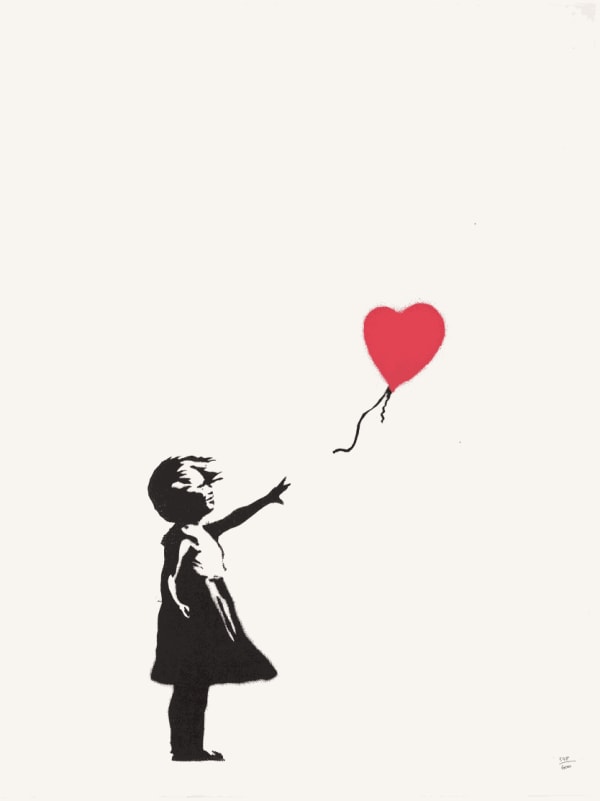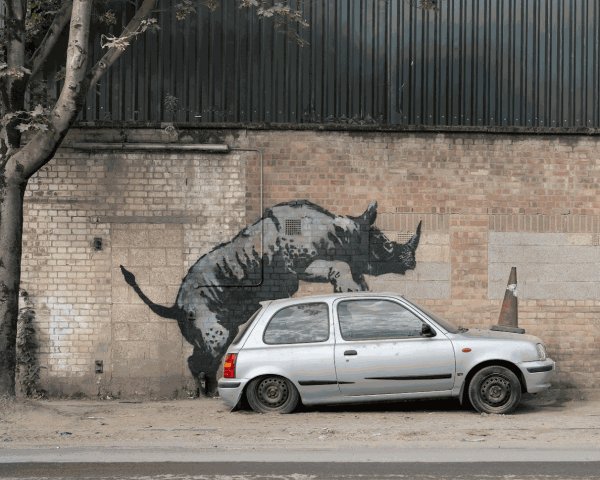-
 Banksy, Rickshaw, 2009.
Banksy, Rickshaw, 2009.
Oil on canvas, 336 × 274 cm. Unique.
© Banksy. -
"Some people represent authority without ever possessing any of their own.”
- Banksy
The piece overtly critiques how the “holiday” or “tourist moment” for Western visitors is underwritten by labour and inequality elsewhere. The cheerful duo, umbrella and selfie in hand, obliviously enjoying themselves, are reliant on a child’s back (literally) for mobility. The imagery forces us to ask: what economic mechanisms make that leisure possible? What hierarchies and global flows enable that rickshaw ride? The child’s monochrome treatment emphasises invisibility and devaluation of the worker. Sources note that “a pair of corpulent tourists sits in a rickshaw taking photographs while the tiny boy attempts to pull them along.



